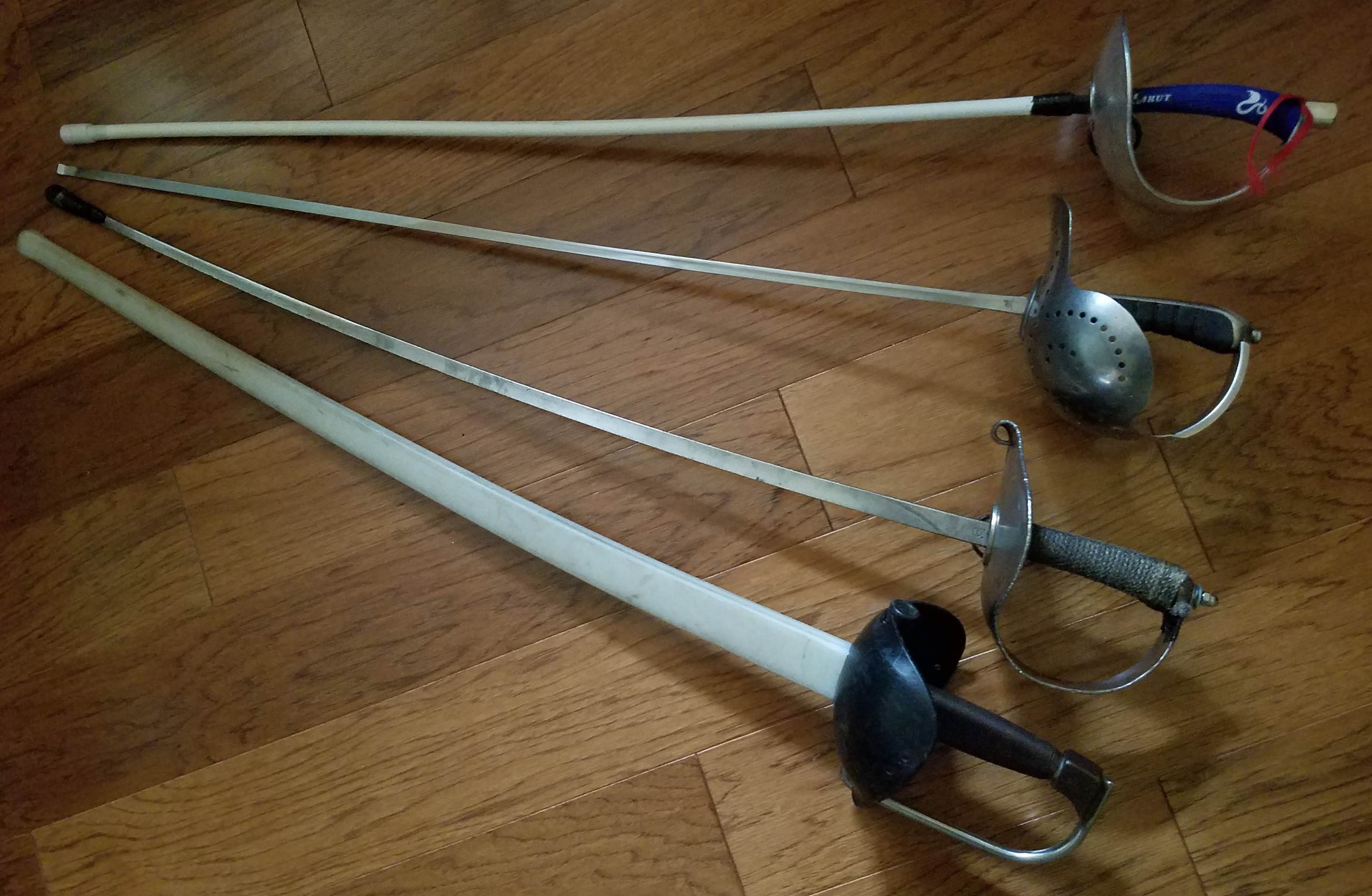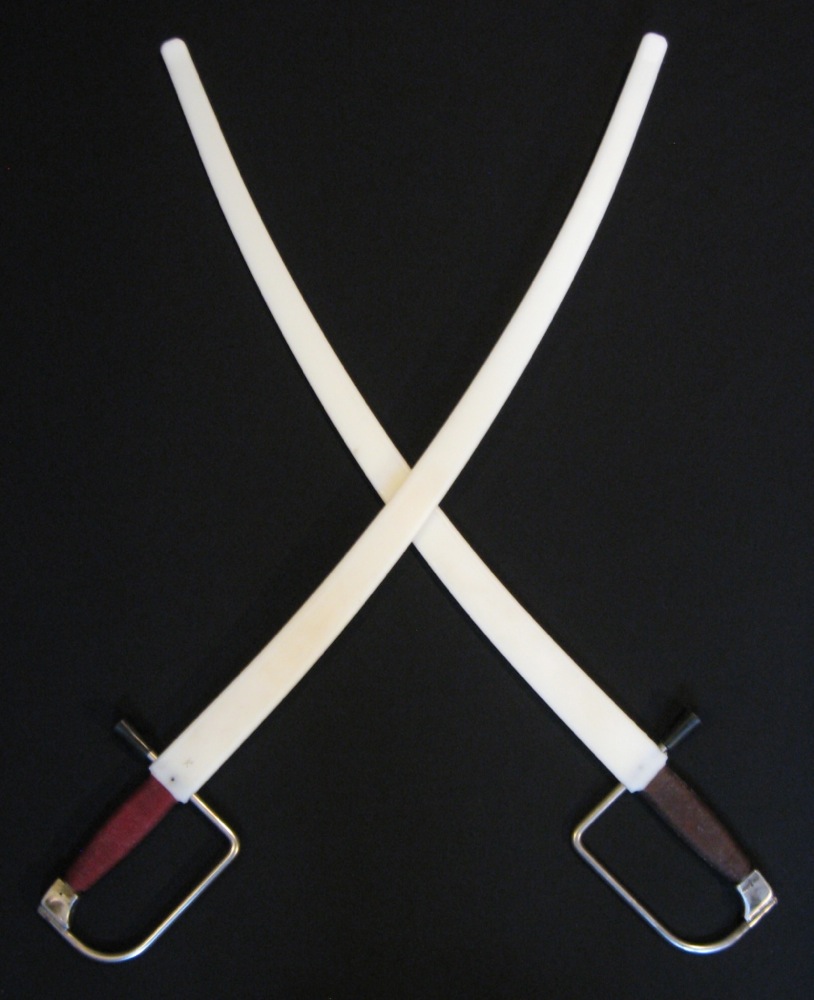Sabre (circa 16th-19th Century)

We study and practice a variety of sabre forms using period sources such as Del Frates 1876 Treatise for Radaelli's Military Fencing Master's School and Alfred Hutton's "Cold Steel: A Practical Treatise on Sabre" published in 1889. We will provide more information on sabre here in the future.
For equipment, we use both synthetic and steel sabres along with appropriate protective gear.
Polish Szabla (circa 16th-18th Century)

Description
Poland, at a crossroads between the east and west, had its fencing influenced by early Turkic, Arabic and other eastern curved weapons as well as influences from the west. The version we are studying first appeared in the 16th century. With single edged (typically double edged at the tip) blades 31 to 33 inches in length, it weighed 1 1/2 to 2 pounds and had minimal hand guard.
Equipment
We use both synthetic and steel sabres.
We wear modern fencing jackets, masks, heavy padded gloves along with arm and elbow protection.

Manner of Play
The entire body is target but the primary targets are arm, torso and head. Attempting to strike low has the high risk of exposing ones head to a counter strike. We also avoid hitting low without knee protection. This is primarily a cutting sword with many crossing and circular actions, that gave a stronger cut, in addition to direct cuts that became more common in later period sabre fencing. Thrusts were still used - and could be interesting as the curve blade can be worked to get around things.
Period sources
As there are few written sources for this weapon and period, one of the few Polish language sabre manuals is a later book ("Treatise on Fencing", Michal Starzewski, 1830). Our primary resource is an even later book - Richard Marsden's "Polish Saber, The use of the Polish Saber on foot in the 17th century" published in 2015 (Marsden's research encompassed a variety of Polish sources as well as content inferenced from other western historical fencing documents).
There are also a number of Western European publications that were cognizant of Eastern European sabre such as: A manual by Francesco Antonio Marcelli, Italian 1686, which discusses the use of sabre, appears to be referring to Polish Sabre (sabre vs. sword - i.e. Rapier). The Art of Fencing Reduced to its True Principals by de Saint Martin, Austrian 1804, which is primarily a Smallsword book but has a significant section on sabre that seems influenced by observation of Hungarian Sabre.